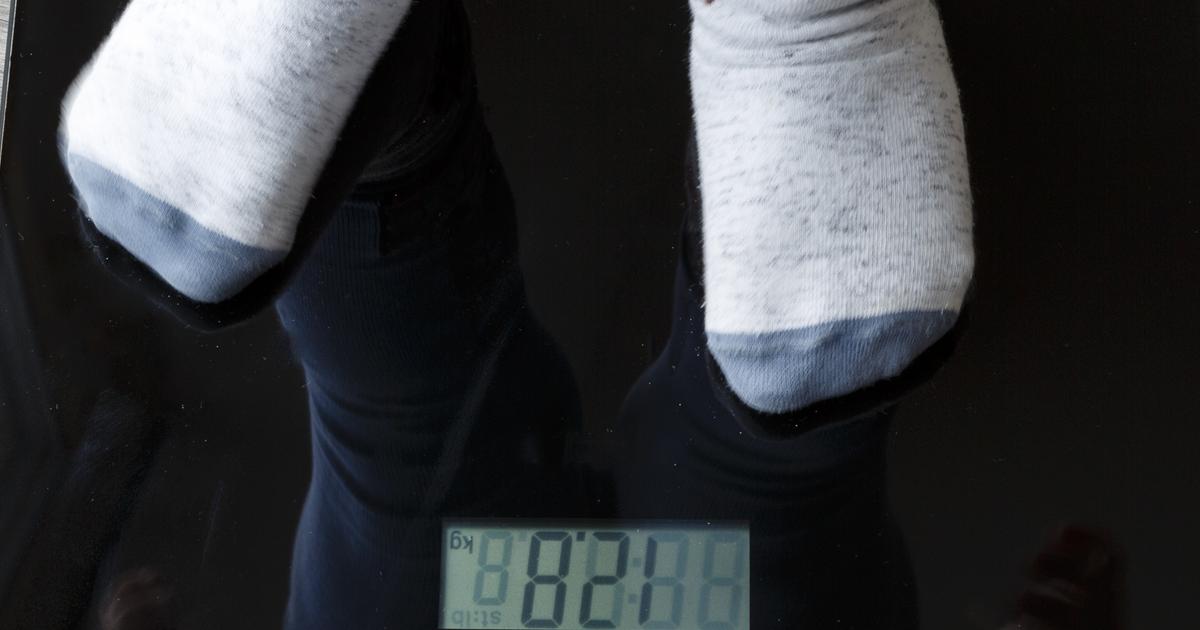Major Symptoms Of Churg-Strauss Syndrome
Churg-Strauss syndrome is an inflammatory disease that affects the small and medium blood vessels in the body. Most commonly, the disease has the biggest impact on the lungs and skin, though other organs, such as the kidneys, nerves, heart, and bowels, can also be affected. Men and women are equally affected by Churg-Strauss syndrome, though it is most common in individuals aged thirty to forty-five. In fact, it's quite rare for children or those over sixty-five to be diagnosed with the disease. The exact causes of Churg-Strauss syndrome are unknown, but there are several identifiable risk factors, such as having a lung condition, taking certain medications, the presence of anti-neutrophil cytoplasmic antibodies in the blood, and some autoimmune diseases. Though experts are unsure of the causes, there are several major symptoms known to signal Churg-Strauss syndrome. Get to know them now.
Asthma

Asthma is the clearest and most common predictor of who will go on to develop Churg-Strauss syndrome. This is because of the feature in both conditions in which the blood vessels inflame. In Churg-Strauss, this mostly occurs in the lungs, nerves, skin, and abdomen, while asthma patients experience an inflammation of the lungs just before having an attack. In both conditions, the blood vessels affected by inflammation are the veins and small arteries. Asthma typically develops between three and nine years before other symptoms of Churg-Strauss syndrome begin to show. Often, asthmatic symptoms may actually appear to reduce and improve while the inflammation spreads to other areas of the body.
Keep reading to understand more about the various symptoms of Churg-Strauss syndrome now.
Sinusitis

Prolonged or frequent sinusitis is another symptom of Churg-Strauss syndrome. Sinusitis occurs when the sinuses become infected, causing pain, swelling, and inflammation around the eyes, cheeks, and forehead. Individuals who develop the condition may also experience a blocked nose, which inhibits one's ability to smell, a fever, a sinus headache, or discolored mucus coming from the nose. Tenderness or pain in the face is quite common, as the growth of small, non-cancerous nasal polyps lead to chronic inflammation. Having a history of chronic sinusitis and other sinus infections is very common in individuals who go on to develop Churg-Strauss syndrome.
Continue to reveal more symptoms of Churg-Strauss syndrome.
Night Sweats

Nights sweats are another common symptom of Churg-Strauss syndrome. While it's normal to sweat a bit during sleep, this type of sweating goes beyond the norm. If you're waking up with soaked clothing and bedding regularly, it could be a sign to see a doctor. Night sweats occur in conjunction with Churg-Strauss because of the inflammation of the blood vessels. When this occurs, it naturally increases one's body temperature, causing the person to overheat. Patients will typically feel hot but also have the chills or shivers. It can also cause weight loss, insomnia, and fatigue. If sweating during the night is keeping you up regularly, consult a doctor quickly to assess potential causes and complications.
Keep reading to learn more details about symptoms of Churg-Strauss syndrome now.
Joint Pain

Joint pain can also occur in patients with Churg-Strauss syndrome. Fever and sweating can lead to a loss of appetite and general illness, which typically leads an individual to rest a lot. When this happens, the muscles and joints can become locked or tightened, causing tenderness, numbness, abnormal sensations, and even pain. Joint pain in Churg-Strauss patients typically occurs in the hands and feet, but it can also affect the joints in the arms and legs. Again, inflammation is the main component of this disorder and, though it typically affects the lungs and skin, it can certainly spread to the tissues in the joints, causing swelling, stiffness, and aches.
Continue reading to learn more symptoms of Churg-Strauss syndrome now.
Weakness And Fatigue

Weakness and fatigue are two more symptoms commonly reported by patients with Churg-Strauss syndrome. Because flu-like symptoms may present, causing general feelings of being ill, the body's response is to try to fight back. Weight loss, decreased appetite, side effects from medications, nasal blockages, and prolonged experience of numbness and pains in the body will eventually all catch-up, causing the patient to feel physically weak in the muscles and limbs. Excessive sweating can lead to insomnia, which further increases the likelihood of fatigue. Sometimes, the weakness in the appendages can also result from an injury done to the nerves after excessive inflammation.
Uncover more details on the warning signs of Churg-Strauss syndrome now.
Weight Loss And Loss Of Appetite

Weight loss and loss of appetite typically occur together during the eosinophilic stage of Churg-Strauss syndrome. During this stage, an excessively high level of eosinophils (a type of white blood cell) damages the digestive system, lungs, and other areas. Patients may gradually eat less and less, and they might prefer a liquid diet at times. Weight loss with this syndrome is entirely unintentional, and it tends to worsen during the next stage of the condition (the vasculitic stage). Patients who notice a loss of appetite and unintentional weight loss should mention these to their doctor. Drugs to stimulate appetite may be appropriate, and individuals might wish to ask a nutritionist about ways to increase their calorie consumption. High-calorie meal replacement shakes could be beneficial for some patients.
Discover additional Churg-Strauss syndrome now.
Gastrointestinal Bleeding

During the eosinophilic (second) stage of Churg-Strauss syndrome, the patient may develop gastrointestinal bleeding. The amount of bleeding may range from mild to severe, and patients could experience rectal bleeding and black or tar-colored stools. Some patients could have blood in the urine, and vomiting blood has also been observed. Along with these outward signs of gastrointestinal bleeding, patients might have lightheadedness, chest pain, or shortness of breath, and some individuals experience coughing and severe abdominal pain. Doctors generally evaluate gastrointestinal bleeding with blood, stool, and urine tests, and patients will also need imaging studies to find the source of the bleeding. Nasogastric lavage, endoscopy, colonoscopy, angiography, and balloon-assisted enteroscopy are useful in locating bleeding from certain sites. While some gastrointestinal bleeding may stop on its own, patients who have lost a significant amount of blood might require blood transfusions. Patients who have had this type of bleeding should not take acetylsalicylic acid, and they may also need to stop taking blood thinners and nonsteroidal anti-inflammatory drugs.
Get more information on the symptoms liked to Churg-Strauss syndrome now.
Swollen Lymph Nodes

Swollen lymph nodes are frequently observed during the vasculitic stage of Churg-Strauss syndrome. These can occur in the face, neck, and other areas of the body. Depending on the degree of swelling, the lymph nodes might also be painful to the touch, and pain may increase with certain movements. Swollen lymph nodes vary in size, and they typically range from the size of a pea to the size of a cherry. Along with the swelling of the lymph nodes, patients at this stage could experience swollen, painful joints, and skin rashes or sores may be present. To assess lymph nodes, a doctor will begin by feeling the lymph nodes along the jaw, neck, collarbone, and armpits. They may also need to feel the lymph nodes in the groin. The doctor will note which of the patient's lymph nodes are painful, and the degree of swelling in each node. Blood tests, ultrasounds, x-rays, or MRI scans might be necessary to rule out certain conditions, and the patient may need to have a lymph node biopsy. In some cases, the physician might recommend removal of one or more lymph nodes.
Discover addition warning signs of Churg-Strauss syndrome now.
Peripheral Neuropathy

Patients in the vasculitic stage of Churg-Strauss syndrome could experience peripheral neuropathy, a condition that causes severe pain, tingling sensations, and numbness in the hands and feet. Patients might feel as though they are wearing gloves or socks when they aren't, and foot pain may occur while the patient's feet are underneath a heavy blanket. Extreme sensitivity to touch develops for some individuals, and others might experience muscle weakness, coordination difficulties, or falls. To assess peripheral neuropathy, doctors take the patient's medical history and perform a neurological exam. During the exam, the physician will check for tenderness in the patient's hands and feet, and they may also check the patient's response to light touch and sharp sensations. Reflexes, coordination, muscle tone, and grip strength will also be evaluated. Doctors may order nerve studies, blood tests, imaging, and skin or nerve biopsies to help in determining the severity of the patient's peripheral neuropathy. To manage symptoms, patients might be prescribed pain relievers or topical treatments, and both antidepressants and anti-seizure medicines may be beneficial as well. TENS therapy and physical therapy are sometimes used in conjunction with medication.
Continue reading to learn more about the symptoms associated with Churg-Strauss syndrome now.
Irregular Heartbeat

Some patients in the vasculitic stage of Churg-Strauss syndrome may develop an irregular heartbeat. This symptom is sometimes accompanied by chest pain or shortness of breath, and some patients may also feel dizzy. There are several different types of irregular heartbeat, and patients might experience these in different ways. For example, some irregular heartbeats can feel as though the heart is skipping a beat or fluttering, and other types may feel more like a pounding in the chest. To investigate an irregular heartbeat, a doctor will feel the patient's pulse at the wrist or neck, and they might also assess the pulses in other areas of the body. The doctor will then use a stethoscope to carefully listen to the patient's heart sounds. An electrocardiogram is typically the next step, and some patients might be asked to wear an event monitor or a Holter monitor to record the heart's activity for a few days. Echocardiograms (ultrasounds of the heart) and electrophysiology studies may also be useful in diagnosis. Irregular heartbeats can sometimes be controlled with medication, and electrical cardioversion, pacemakers, or implantable cardioverter defibrillators might be recommended if medication is ineffective.